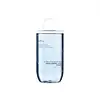What's inside
What's inside
 Key Ingredients
Key Ingredients

 Benefits
Benefits

 Concerns
Concerns

 Ingredients Side-by-side
Ingredients Side-by-side

Water
Skin ConditioningMethylpropanediol
Solvent1,2-Hexanediol
Skin ConditioningSea Water
HumectantGlycerin
HumectantBetaine
HumectantAllantoin
Skin ConditioningButylene Glycol
HumectantCaprylyl Glycol
EmollientEthylhexylglycerin
Skin ConditioningPanthenol
Skin ConditioningXanthan Gum
EmulsifyingMalachite Extract
AntioxidantDisodium EDTA
Hydrolyzed Hyaluronic Acid
HumectantPentylene Glycol
Skin ConditioningXylitylglucoside
HumectantAnhydroxylitol
HumectantSodium Hyaluronate
HumectantXylitol
HumectantPotassium Hyaluronate
Skin ConditioningGlucose
HumectantHydrolyzed Sodium Hyaluronate
Skin ConditioningSodium Acetylated Hyaluronate
HumectantHydroxypropyltrimonium Hyaluronate
Sodium Hyaluronate Crosspolymer
HumectantDimethylsilanol Hyaluronate
HumectantHydrolyzed Calcium Hyaluronate
Skin ConditioningHyaluronic Acid
HumectantSodium Sulfated Hyaluronate
EmollientHamamelis Virginiana Extract
AntiseborrhoeicChamaecyparis Obtusa Leaf Extract
Skin ConditioningSodium Stearoyl Hyaluronate
Skin ConditioningSodium Oleoyl Hyaluronate
Skin ConditioningWater, Methylpropanediol, 1,2-Hexanediol, Sea Water, Glycerin, Betaine, Allantoin, Butylene Glycol, Caprylyl Glycol, Ethylhexylglycerin, Panthenol, Xanthan Gum, Malachite Extract, Disodium EDTA, Hydrolyzed Hyaluronic Acid, Pentylene Glycol, Xylitylglucoside, Anhydroxylitol, Sodium Hyaluronate, Xylitol, Potassium Hyaluronate, Glucose, Hydrolyzed Sodium Hyaluronate, Sodium Acetylated Hyaluronate, Hydroxypropyltrimonium Hyaluronate, Sodium Hyaluronate Crosspolymer, Dimethylsilanol Hyaluronate, Hydrolyzed Calcium Hyaluronate, Hyaluronic Acid, Sodium Sulfated Hyaluronate, Hamamelis Virginiana Extract, Chamaecyparis Obtusa Leaf Extract, Sodium Stearoyl Hyaluronate, Sodium Oleoyl Hyaluronate
Water
Skin ConditioningPropanediol
Solvent1,2-Hexanediol
Skin ConditioningHyaluronic Acid
HumectantHamamelis Virginiana Leaf Extract
Skin ConditioningBambusa Vulgaris Water
Skin ConditioningCamellia Sinensis Leaf Extract
AntimicrobialPanax Ginseng Root Extract
EmollientAloe Barbadensis Flower Extract
EmollientAloe Barbadensis Leaf Extract
EmollientLavandula Angustifolia Flower Extract
CleansingLavandula Angustifolia Oil
MaskingMelia Azadirachta Leaf Extract
Skin ConditioningMelia Azadirachta Extract
Skin ConditioningOcimum Sanctum Leaf Extract
Skin ConditioningCorallina Officinalis Extract
Skin ConditioningCurcuma Longa Root Extract
MaskingSolanum Melongena Fruit Extract
Skin ConditioningMaltodextrin
AbsorbentButylene Glycol
HumectantPolyglyceryl-10 Myristate
Skin ConditioningEthylhexylglycerin
Skin ConditioningCitrus Aurantifolia Oil
CleansingLimonene
PerfumingLinalool
PerfumingWater, Propanediol, 1,2-Hexanediol, Hyaluronic Acid, Hamamelis Virginiana Leaf Extract, Bambusa Vulgaris Water, Camellia Sinensis Leaf Extract, Panax Ginseng Root Extract, Aloe Barbadensis Flower Extract, Aloe Barbadensis Leaf Extract, Lavandula Angustifolia Flower Extract, Lavandula Angustifolia Oil, Melia Azadirachta Leaf Extract, Melia Azadirachta Extract, Ocimum Sanctum Leaf Extract, Corallina Officinalis Extract, Curcuma Longa Root Extract, Solanum Melongena Fruit Extract, Maltodextrin, Butylene Glycol, Polyglyceryl-10 Myristate, Ethylhexylglycerin, Citrus Aurantifolia Oil, Limonene, Linalool
 Reviews
Reviews

Ingredients Explained
These ingredients are found in both products.
Ingredients higher up in an ingredient list are typically present in a larger amount.
1,2-Hexanediol is a synthetic liquid and another multi-functional powerhouse.
It is a:
- Humectant, drawing moisture into the skin
- Emollient, helping to soften skin
- Solvent, dispersing and stabilizing formulas
- Preservative booster, enhancing the antimicrobial activity of other preservatives
Butylene Glycol (or BG) is used within cosmetic products for a few different reasons:
Overall, Butylene Glycol is a safe and well-rounded ingredient that works well with other ingredients.
Though this ingredient works well with most skin types, some people with sensitive skin may experience a reaction such as allergic rashes, closed comedones, or itchiness.
Learn more about Butylene GlycolEthylhexylglycerin (we can't pronounce this either) is commonly used as a preservative and skin softener. It is derived from glyceryl.
You might see Ethylhexylglycerin often paired with other preservatives such as phenoxyethanol. Ethylhexylglycerin has been found to increase the effectiveness of these other preservatives.
Hyaluronic acid is naturally found in healthy skin. It is a humectant, meaning it draws moisture to your skin.
This ingredient helps hydrate, soothe, and protect the skin.
What makes hyaluronic acid so hydrating? It has the capacity to bind or hold large amounts of water.
Fun fact: It is already naturally found in our bodies, such as the fluids of our eyes and our joints.
Studies find this ingredient to have anti-inflammatory and anti-microbial properties. This can help speed up wound-healing.
Hyaluronic acid can be irritating if the molecule has a low-molecular weight, or if the molecules are small.
One study found low-molecular weight hyaluronic acid to be pro-inflammatory, meaning some people may experience irritation. This is because our bodies use hyaluronic acid in the wound-healing process to signal to our bodies, via irritation, that something needs healing.
The same study found high-molecular weight hyaluronic acid to be anti-inflammatory.
These are some other common types of Hyaluronic Acid:
Learn more about Hyaluronic AcidWater. It's the most common cosmetic ingredient of all. You'll usually see it at the top of ingredient lists, meaning that it makes up the largest part of the product.
So why is it so popular? Water most often acts as a solvent - this means that it helps dissolve other ingredients into the formulation.
You'll also recognize water as that liquid we all need to stay alive. If you see this, drink a glass of water. Stay hydrated!
Learn more about Water